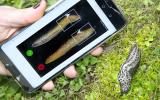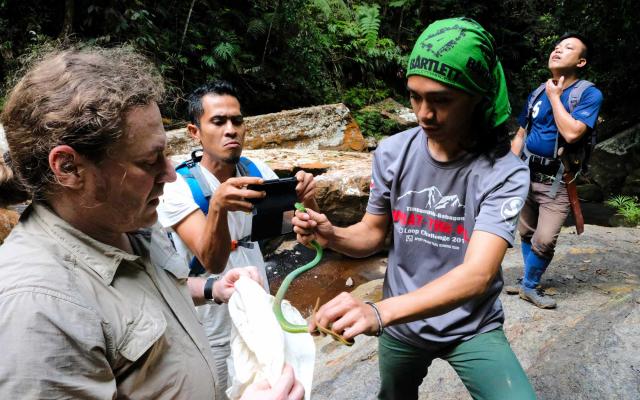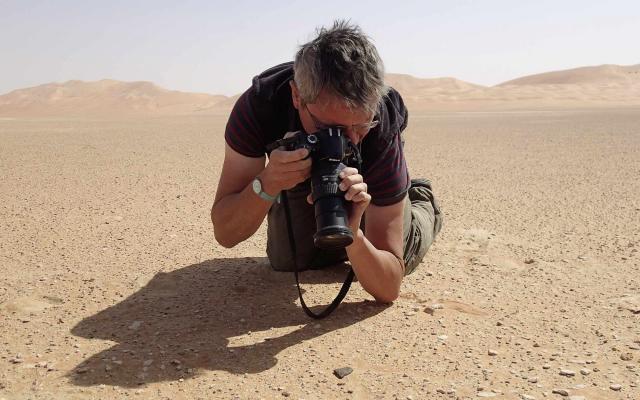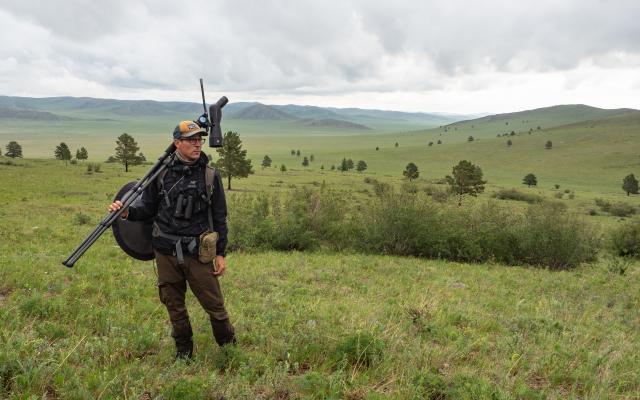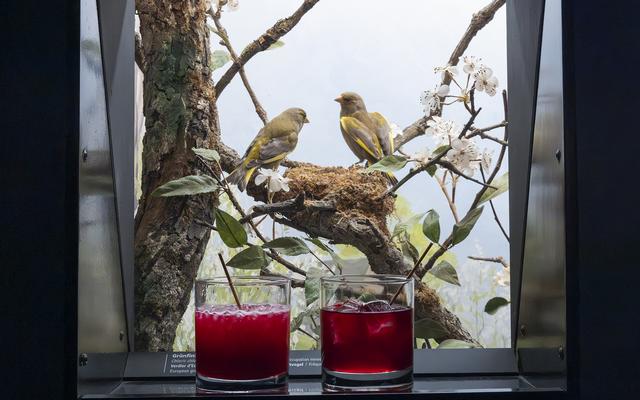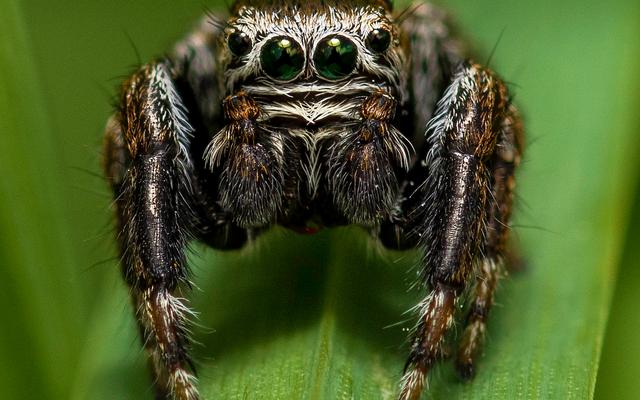‘We can definitely improve the way we identify them,’ states Bochud, a specialist in molluscs and a research assistant at the Natural History Museum of Bern. Back in 2015, the malacologist helped to develop identification exercises for a lecture series held at the University of Bern titled ‘The Biology of Molluscs’. The master’s students on the course practised identifying various types of Swiss snails. However, the exercises were beset by errors, and the students kept asking the same questions. The reason for this, believes Bochud, is due to the field guide for identifying molluscs: it is flawed, difficult to use, and contains too much technical content. Moreover, it doesn’t reflect the latest state of research. When she spoke to Eike Neubert, the curator for molluscs, one thing quickly became clear: an entirely new identification key was needed. What’s more, this key should be made available both to experts in their field and to the general public. This was the when the idea for ‘schneckenchecken.ch’, a digital identification key, was born.
More than 281 species
The aim is for the new identification key to encompass not just gastropods, but all the types of molluscs – slugs, snails, freshwater snails and bivalves (mussels, scallops, etc.) – found in Switzerland. This is an ambitious undertaking given that there are more than 204 species of land snail, 45 types of freshwater snail and 32 types of bivalve in Switzerland, amounting to 281 species of mollusc in total. The identification key should also provide users with access to high-resolution, scientific photographs and the latest findings on the various species.
The concept behind the key was deliberately kept as simple as possible so the key itself can be used by as much of the general public as possible. The use of images and simple yes/no questions allows the user to identify a specific snail based, for example, on external characteristics – whether in a lecture theatre or while out on a Sunday stroll. As Bochud states, there’s no need to lug around a bulky field guide either: ‘All you need is a phone and an internet connection.’
Looking for the perfect partner
The concept, scientific content and expertise were all in place, and the Natural History Museum of Bern’s collection contained all the exoskeletons and shells required for the photos. Even so, there were still various obstacles for Bochud to overcome when building the digital identification key; after all, it’s not often that a malacologist also happens to be an IT expert. When looking for a partner to work with on the project, Bochud got in touch with the Swiss Centre for Fauna Cartography (CSCF). The CSCF’s remit is to provide information free of charge on the proliferation and ecology of animal species in Switzerland. As a result, the centre already has some experience in creating identification keys. Working with the CSCF, Bochud developed the identification key within four years, and it was launched online in October 2019.
Fauna in Switzerland is extremely varied, unique and worthy of protection. Only when we recognise and understand it can we begin to adequately protect it. This is why it is important to find out as much about these animals as possible. To do so, information about fauna native to Switzerland has to be collected, managed and passed on to others. This is the role played by the Swiss Centre for Fauna Cartography (CSCF). The CSCF works with various institutions and coordination centres to collect information on the ecology and proliferation of all animal species in Switzerland. This data can then be used to help to sustain the various species and protect their habitats.
The CSCF also assists with preparing and revising the identification documents essential for correctly identifying species in Switzerland. The various identification keys are available online or can be accessed using the ‘Webfauna’ app. Animal sightings can be reported to the CSCF, which will check the data before integrating it directly into a distribution map.
For the vast majority of Switzerland’s population, molluscs are an unknown quantity. ‘That’s a shame,’ says Bochud, ‘as they are actually extremely diverse and can be found in some amazing locations.’ Switzerland’s lakes and rivers, for example, are home to more than 30 types of freshwater bivalves, with some of them helping to provide a breeding ground for fish. On land, too, there are many more types of mollusc than the common Roman snail. Alongside hairy, needle-shaped and disc snails and finely patterned slugs, there are ones that live more than 2,000 metres above sea level and a few that have developed a foot divided into left and right halves, allowing them to move ‘on two legs’. Anyone planning to go looking for snails needs to have a very keen eye: more than half of the species in Switzerland are no larger than a grain of rice.
Both land-based and water-based molluscs are an essential part of the ecosystem. On land, they act as composting units, breaking down dead plant material, cadavers and faeces and turning them into essential nutrients for the soil and vegetation. Bivalves subsist primarily on suspended matter, which they receive by pumping water through their shells and trapping extremely small particles in their gills. In other words, they act as a type of filter, thus ensuring the water around their habitat remains clear.
Sadly, the diversity of this world is hanging by a very thin thread, as 40% of all Swiss mollusc species are endangered and are on the Red List of Threatened Species. This is due to environmental pollution and the destruction of their habitats. Known for their rather sedate pace, snails often remain in the same spot, which is why any changes to the surroundings can have devastating effects on them. Demolishing a wall, constructing buildings by lakes or changing agricultural practices can wipe out entire populations in an instant. This could be the eventual fate of the species xerocrassa geyeri. It is at risk of extinction, and was found at only seven sites in Switzerland during a study conducted in 2010. This species relies on open areas of ground, and when this habitat disappears due to agricultural or housing developments, the snails disappear along with it. The Swiss bivalve population is also extremely fragile given that they are very sensitive creatures with a limited lifespan. Even minute changes in water quality can prove fatal for many species.
Nature cannot always be classified
When using the identification key, the user answers a series of simple questions on the animal’s external appearance to gradually hone in on the right type. Or at least, that’s the idea. The fact is that even this identification key has its limits, and that is because of the sheer diversity of nature. Some species, for example, come in many different sizes, shapes and colours, so it can be extremely challenging to include all of these parameters in the list of questions.
In other cases, the opposite problem exists: certain species are very different from one another at the genetic or anatomical level, but have exactly the same appearance. In such cases, the identification key will list all possible species types. If the user wants to know exactly what species they are dealing with, they will have to take the animal to a laboratory and either dissect it or subject it to genetic analysis.
However, some problematic examples have never been fully resolved. Research is not always able to definitively state whether extremely similar animals are of the same genus or consist of multiple genera that simply resemble each other.
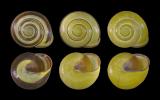
Where can they be found?
Generally speaking, it is possible to find snail and bivalve shells anywhere, as they are made of calcium carbonate and therefore highly durable. They are commonly found on the edge of hillsides or bodies of water, as empty shells tend to roll down the hills or are washed onto shore. It is recommended to use a magnifying glass, as most snail shells are extremely small and easy to overlook. This is why it is worth looking through the soil and turning over stones, rotting wood and foliage carefully to find the shells. Be sure to replace these stones and branches in the same place afterwards. ‘Animals and their habitats should be left in peace,’ says Bochud. ‘Only those shells that are actually empty should be collected. It is important to leave living animals exactly where you found them.’
Living animals are best observed in spring or autumn, ideally following a day when it has been raining. Snails are particularly drawn to shady, moist and cool areas, as this prevents them from drying out. Winter and summer are not the best times to go looking for them, as this is when they become rigid to counteract the cold and the heat, respectively. It is possible to find molluscs at night as well, as this is when many types of slug are mainly active. During the day, they burrow in the dirt or conceal themselves in the undergrowth.

